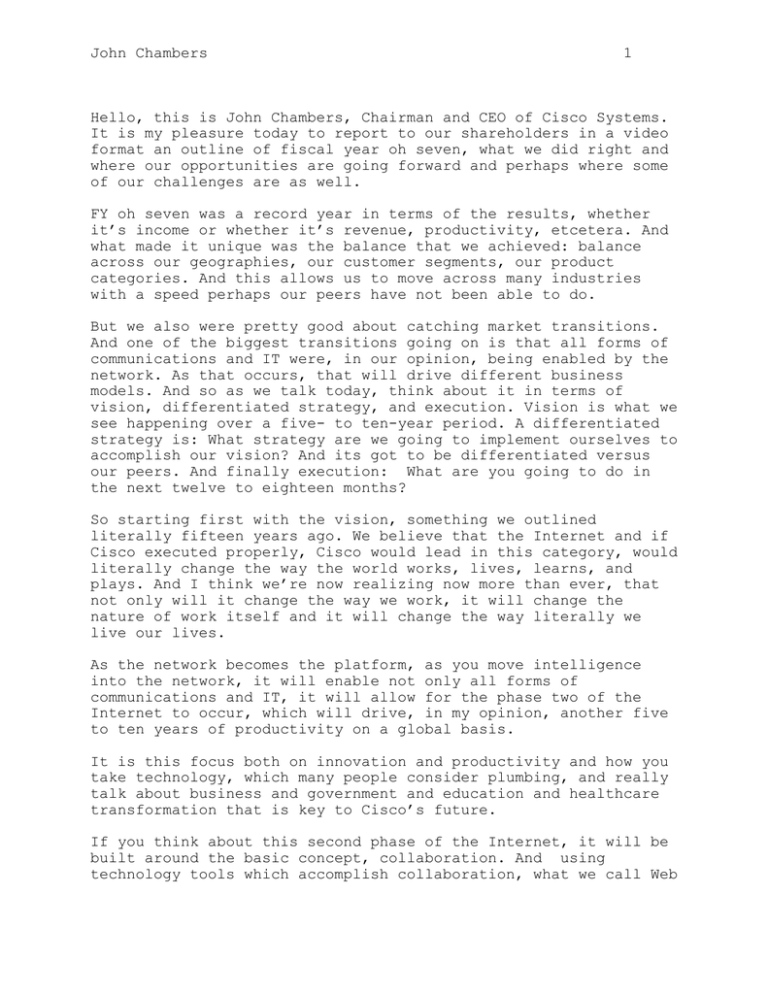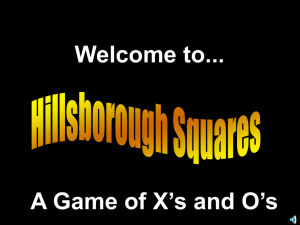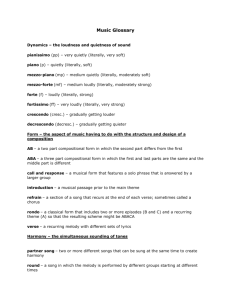John Chambers 1
advertisement

John Chambers 1 Hello, this is John Chambers, Chairman and CEO of Cisco Systems. It is my pleasure today to report to our shareholders in a video format an outline of fiscal year oh seven, what we did right and where our opportunities are going forward and perhaps where some of our challenges are as well. FY oh seven was a record year in terms of the results, whether it’s income or whether it’s revenue, productivity, etcetera. And what made it unique was the balance that we achieved: balance across our geographies, our customer segments, our product categories. And this allows us to move across many industries with a speed perhaps our peers have not been able to do. But we also were pretty good about catching market transitions. And one of the biggest transitions going on is that all forms of communications and IT were, in our opinion, being enabled by the network. As that occurs, that will drive different business models. And so as we talk today, think about it in terms of vision, differentiated strategy, and execution. Vision is what we see happening over a five- to ten-year period. A differentiated strategy is: What strategy are we going to implement ourselves to accomplish our vision? And its got to be differentiated versus our peers. And finally execution: What are you going to do in the next twelve to eighteen months? So starting first with the vision, something we outlined literally fifteen years ago. We believe that the Internet and if Cisco executed properly, Cisco would lead in this category, would literally change the way the world works, lives, learns, and plays. And I think we’re now realizing now more than ever, that not only will it change the way we work, it will change the nature of work itself and it will change the way literally we live our lives. As the network becomes the platform, as you move intelligence into the network, it will enable not only all forms of communications and IT, it will allow for the phase two of the Internet to occur, which will drive, in my opinion, another five to ten years of productivity on a global basis. It is this focus both on innovation and productivity and how you take technology, which many people consider plumbing, and really talk about business and government and education and healthcare transformation that is key to Cisco’s future. If you think about this second phase of the Internet, it will be built around the basic concept, collaboration. And using technology tools which accomplish collaboration, what we call Web John Chambers 2 two dot zero, many of those being invented candidly are utilized by our younger generation, often our kids. We will take new capabilities like TelePresence and literally transform support models, service models, how we interface to our customers, and how we interface to each other. And we will continue to have an innovation engine that cranks not only in terms of internal development, but also in terms of acquisitions and partnering. Now I could not be more proud of both areas. Our acquisitions this last year included Scientific Atlanta from a video standpoint, which has been a tremendous success, and also WebEx. And while it’s too early to say for sure, it looks like WebEx will also be a major, major success. Our internal innovation engine was going very, very strong with internal startups and literally whole new waves of advanced technologies. Now, let’s take a step back and say what enables our differentiated strategy, thinking about strategy in the two- to four-year cycle. So from a differentiated strategy point of view, we, perhaps different than most all of our peers, we compete to understand what market transitions are occurring either technology-wise, economically, or business process change. And we identify those market transitions by listening to our customers truly a customer-driven company. That we reinvented the definition of innovation - not just feeling that we had to do it all ourselves, or even had the ability to do it all ourselves, but to say let’s do it ourselves where appropriate. Let's learn how to acquire and let’s learn how to partner and let’s learn how to collaborate, even at times with our peers who may be our competitors in the industry. And instead of looking at it from a point of view of just saying we innovate only on existing products, literally doing startups internally, which I could not be more proud of, and continuing to crank the acquisition industry in terms, change the industry in terms, of being able to do acquisitions where probably ninety percent of acquisitions have failed in our industry. And yet Cisco has probably in excess of seventy percent have hit or exceeded what we told our Board of Directors we would do. And instead of thinking about this as individual products or individual markets we address, we think of it of a technology architecture - how Layers 1 through 7 of the OSI stack come together and how you do this first loosely and then tightly coupling products together to allow our customers ease of use and a much lower cost of ownership and investment protection. And instead of just thinking about this in plumbing, we talk about how to use this plumbing to change the business architecture. How do you use Internet Business Solution Groups, our consultancy groups, to help them implement and change their own business or John Chambers 3 governmental architecture? And then literally introducing the concept of collaboration, which I think would drive, along with Web two dot zero, our own company’s transformation, a different relationship with our customers, but also require a level of teamwork, which I think will drive productivity of this company and I believe of the whole high-tech industry for a decade. So you think about the strategy and you begin to think about how is it executed and a large part of our strategy was built around balance. The ability not to just think about it as routers or switches, but to think about a product group of families that go over two dozen product families. Then, instead of thinking about it just being one customer segment such as enterprise or service provider, or the commercial market or the home or the consumer, like many of our peers thought about it, we believe those will be loosely and then tightly integrated together, common architecture, common security strategy where any device to any content, either in our personal lives or in our business lives over any combination of networks. And to realize the balance across the geographies is also very key. Where you saw this last year literally in the last quarter, twenty-three of our top thirty countries grew in excess of fifteen percent. And from the product perspective, seventeen of our top twenty products from an order perspective grew in excess of fifteen percent. So you look at this balance and you break it down. Let’s look at it now from a customer segment point of view, with our largest customer segments being the service provider, the commercial, and the enterprise marketplace. The commercial market has been the most stable around the world. And while it will obviously be subject to economics ups and downs, you don’t quite see the swings that you do see from the enterprise segment of the market. It was very solid in all of our key large geographies, not just in terms of year-over-year growth, usually averaging in the mid- to upper teens and sometimes actually in the low twenties, but also in terms of the balance even within companies. We continue to expand our products and services and distribution capabilities in these areas, and with new acquisitions like WebEx, expand how we go to market together with our partners in ways that others have not thought of before. Service providers you’ve probably seen as making the biggest transformation in this market, with Cisco moving from being a strategic product provider to service providers to more of a business partnership. The ability not just to provide routers and switches and video, but how do you bring new revenue streams to them in terms of how IPTV is going to occur. And video is an art as much as it is a science, which requires an architectural John Chambers 4 approach, not a systems integration approach in my opinion, literally moving service providers from transporting bits or voice to providing experiences for their customers. Our geographic balance was very good as I said earlier across all the key geographies, especially pleased with the solid growth in the U.S. Europe returned in terms of good balance across, not just these major three countries - Germany, France, and U.K. but across Europe as a whole. Asia Pacific especially in the last half of the year began to grow very rapidly in the low twenties. And you saw the Emerging Markets literally on fire in terms of the directions, in terms of growth and direction of that growth. And while we will absolutely always be subject to economic variabilities or changes in capital spending, it was this balance on the global economy that resulted in our record years. When you think about our execution, we’ve literally exploded down to specific numbers - not talking marketing positioning but literally talking about how do we do in the products? And it was this product balance that perhaps showed more than anything else, how well balanced we are as a company, not depending upon a single product like a router or even switches within it, but new advanced technologies which are coming up on twenty-five percent of our total business in terms of orders for products and grew year over year well into the twenties. Our balance across the customer segments, whether it’s the enterprise or the commercial or the consumer, where in the last quarter of the fiscal year, the enterprise grew in the upper teens, about seventeen percent if I remember right, and literally the service provider and commercial marketplace grew in the low twenties from an order of perspective. So when you think about this, it is how you play this very complex chess game literally in terms of products, in terms of innovations, in terms of geographies, in terms of services within that, and key customer segments and how interdependent they are in our strategy implementation. I think we are extremely well positioned in terms of our execution, differentiated strategy, and vision for the future. And when you think about the next phase of the Internet, what we will call phase two of the Internet, it will be delivered around collaboration. And we clearly intend to lead, not just in terms of thought leadership for how the market will use this, but also lead ourselves on how we re-innovate our company to become truly the next-generation collaborative company and also how we reinvent ourselves in terms of the next generation of customer relationships using our own technology. John Chambers 5 It is that ability that allows us to achieve these strong revenue numbers, earnings numbers, cash, and balance sheets results. And remember again, we must reinvest in order to see growth in the future. We do not make decisions based upon a quarter or a yearly basis. Our decisions, if we’re doing it right, should always be thinking two, three, five, and seven years out. And perhaps that is also something we do different than our peers. We think about how is our vision going to occur and don’t fall into the traps of radically jerking around your resources in terms of your positioning and your commitment. We play marketing transitions for the long term, not for the short. And when you look at the results from an execution point of view, it was a record as I said in terms of almost every category, revenue of thirty-four-point-nine billion. That's over a twenty percent increase from fiscal year oh six. You begin to look at product revenue growth of twenty-nine billion dollars in terms of the total revenue. We added eleven thousand, six hundred employees. Our net income was seven-point-three billion, literally a thirty-one percent year-over-year increase. We generated ten billion dollars of cash from operations and earnings per share record one-point-one-seven in earnings per share. In many of our areas, such as lean manufacturing, allowed us to bring innovation into the manufacturing process and to literally achieve not our traditional mid-single digits in terms of inventory turns as an example, but literally inventory turns of about a factor of ten. So when you look at this, we’ve been very pleased. But perhaps one of the areas that people had not thought about is the importance of corporate social responsibility. I’ve always believed as a company or as individuals, those who have been successful owe an obligation to give back. First, it’s the right thing to do but second it’s just good for business. And while we were one of the leaders of this a decade ago, I think many people are now realizing that part of our success both at the government leaders level, which I’m reminded of regularly, but also at the corporations around the world, is how we as a company address our corporate social responsibility in giving back, how we treat our own employees, our shareholders, and our customers uniquely. But also how, as we’ve been successful, we give back with an ability to really use our own technology to leverage the investments we make. This commitment to corporate social responsibility is reflected in many areas. Our Networking Academies literally are ten years old and over the last ten years, we are in over a hundred and sixty countries and have over two million graduates of the John Chambers 6 program and five hundred thousand students in the program - what many government leaders around the world have said is the best corporate social responsibility, most effective, consistent that they’ve ever seen. It is the ability to also look around the world and provide enough capability but also in the U.S. where we gave forty million dollars of investments to the Twenty-First Century Schools to help rebuild in Mississippi and Louisiana after the terrible results of Hurricane Katrina. Looking at not rebuilding what we had, but building a school system for the future. And out of the forty million dollars, twelve million of it came from the Cisco executives ourselves in personal giving. So the ability to say: here’s what’s possible, here’s how you can transform education, healthcare, companies, or even countries, how you catch market transitions to pull it all together, and how you use corporate social responsibility as an important part of our culture for the future. As we’ve done this over the years, we literally have been very smooth on our transitions of our leadership in each of our functional groups. In fact, most of my functions have had three, four, five, or six leaders over the last fifteen years. And we’ve been able to make those transitions, although they always take careful work and implementation, almost without even creating a slight bump along the way. It is both with a great deal of pleasure, but also with a regret in terms of the friendship, that Dennis Powell will be retiring this year. He literally took the reins and the CFO ranks from Larry Carter in fiscal year two-thousand-three. He has led us through some of the most challenging times we’ve seen, but also some of the most rapid growth times we’ve seen. This last year as an example, we were number-two in the country in terms of large caps on increase of our market cap, increasing our market cap literally year over year by sixty-six billion dollars, a growth of sixty percent over the prior fiscal year. It is that type of fiscal results, generating ten billion dollars in cash in the same year, that has made Dennis literally a legend. And at the same time, Dennis has developed a great team and is making a very smooth transition to Frank Calderoni, who is the Senior V.P. of Customer Solutions within finance and has been with us for over three years. Frank will do a great job, just as Dennis did when he took over the reins from Larry. Frank has already been a CFO of two publicly traded companies, and he’s off to a great start in a smooth transition as he will replace Dennis. John Chambers 7 So there’s a lot to be proud of in terms of things we’ve done well, but also a realization that we must do better in many areas. Focusing on literally our relationships with our customers, and how they change, our partners, our employees, and our shareholders. We try to be very transparent in this and to always do a good job of not just communicating in terms of talking to you, but listening back. It is that ability to listen and listen to our customers and others that allowed us to catch market transitions and to catch what we believe will be the next wave of the Internet, literally working together to change the nature of work and the way we live. Thank you for joining us today and I want to encourage you to look at our annual report in terms of our letters to you, the shareholders. I have a great deal of confidence in our future, but also a healthy paranoia that there can always be a number of things that can trip us up along the way. Our commitment to you is we will give it everything we’ve got to produce the results for our shareholders, our customers, and our employees. Have a great day. [END OF TRANSCRIPTION]




